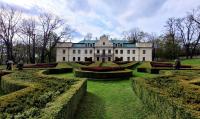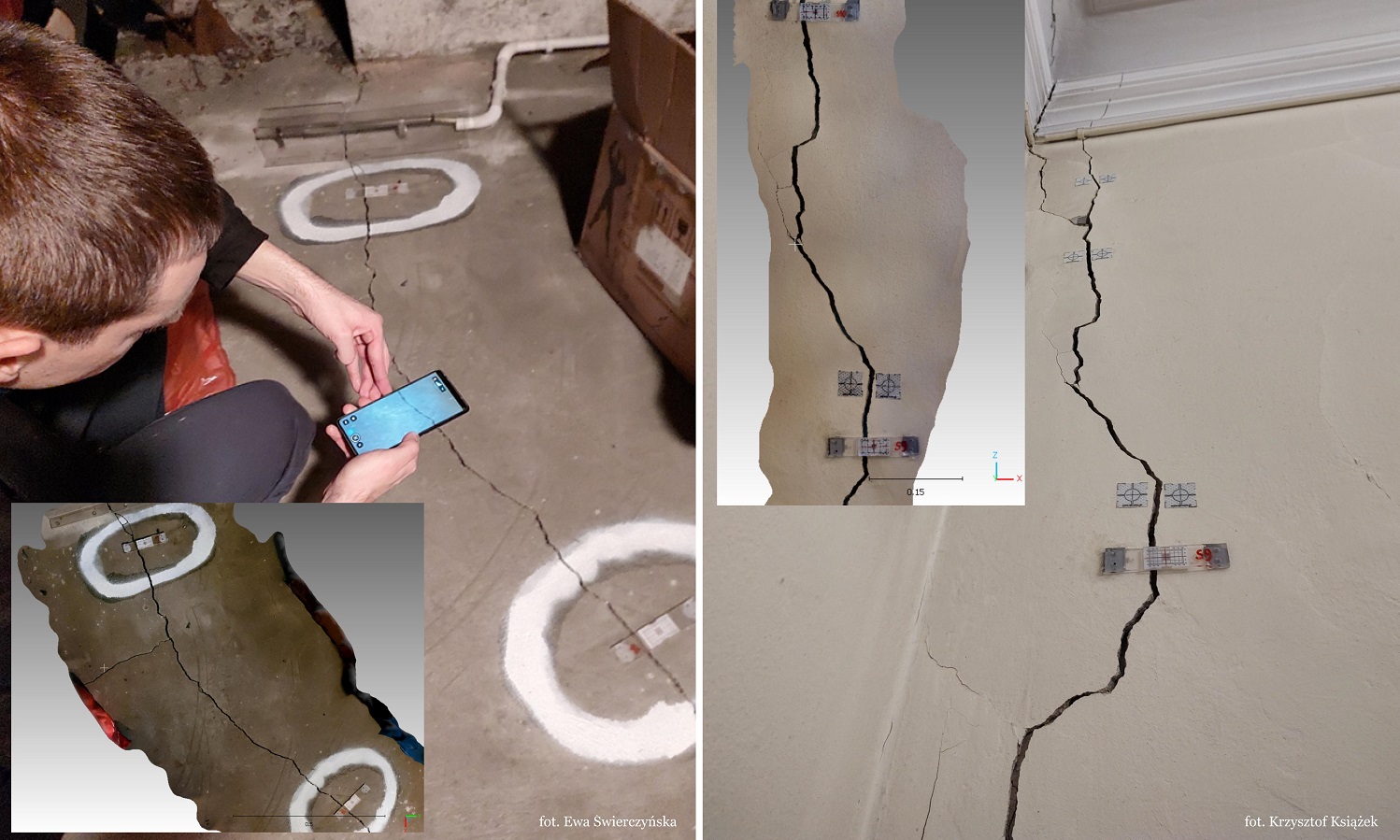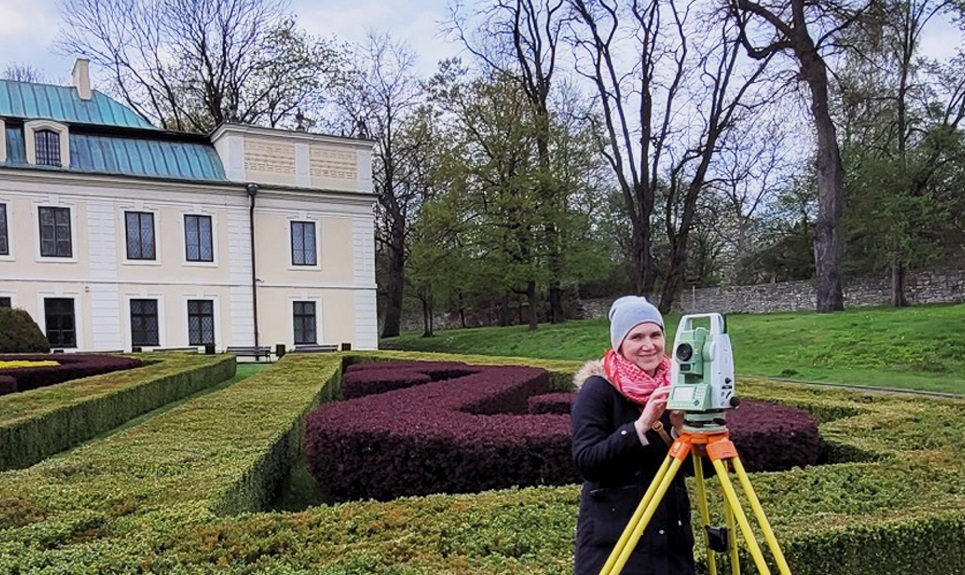Modern technologies help monuments in Będzin
Using modern geoinformation technologies, a team from the Faculty of Geodesy and Cartography will check the technical condition of the historic buildings of the Museum of Zagłebie in Będzin.
Research work is carried out in the area of the Mieroszewski Palace, built in 1702, a 14th-century fortified castle with a unique tower and the "Mizrachi" House of Prayer – a historic synagogue from the early 19th century, in which valuable polychromes exposed to harmful environmental conditions have been preserved.
– Our main goal is to assess the possibility of using modern geoinformation technologies – optical, physical and algorithmic – to examine the technical condition of construction structures enabling the so-called structural health monitoring (SHM) analysis in the risk management process – says the project manager, Ewa Świerczyńska, MSc, from the Division of Engineering Geodesy and Measurement Systems. – We want to identify deformations and damage that can cause objects to malfunction – she explains.
Due to its historical value, monuments cannot be subject to classic surveying or construction measurements, which are often invasive (installation of signs and measuring equipment directly on the examined structures). In this case, the only solutions based on photogrammetry and remote detection (e.g. laser scanning) enable obtaining repeatable readings. Moreover, the difficulty with accessing the constantly occurring signs of structural damage (gaps and expansion joints) makes it necessary to use small and fully mobile measurement technologies.
– The proposed research concerns the use of mobile techniques and so-called "photomonitoring" to assess the progressive geometric changes in the structure of the mentioned objects – says Ewa Świerczyńska, MSc – As part of the cyclical observations, and then data processing in specialized software, the possibilities offered by modern mobile technology, based on smartphones and UAVs, i.e. drones, will be tested. We also plan to use the technology of terrestrial laser scanning – she enumerates.
All of these optical methods offer the speed and ease of acquiring large amounts of data in a relatively short time. In addition, they are non-invasive, i.e. they do not require interference with the surface of the tested object. This is very important in the inventory of historic buildings, when any violation of the walls must be consulted with the conservator.
This is an interdisciplinary project. Its implementation will involve specialists in the field of engineering geodesy, geoengineering, photogrammetry and remote sensing as well as spatial data processing. A team from the Faculty of Geodesy and Cartography composed of: Janina Zaczek-Peplinska, PhD, Krzysztof Karsznia, PhD, Waldemar Odziemczyk, PhD, Sławomir Łapiński, PhD, Krzysztof Książek, MSc, and Ewa Świerczyńska, MSc, who also cooperates with NaviGate Sp. z o.o. and ULTRAXIS.
The project "The use of modern 3D modeling tools to determine the technical condition of historic buildings" will last until November 15, 2024. It is a continuation of the research conducted by Krzysztof Karszno, Ph.D. Eng., at the Museum of Zagłebie in Będzin. The anticipated result of the team's work is also the preparation of a joint grant application in the field of national heritage protection.










